Workbench
With the weather getting a bit warmer, Peter Marriott turns his attention to summer and describes how to make a beach with a difference.
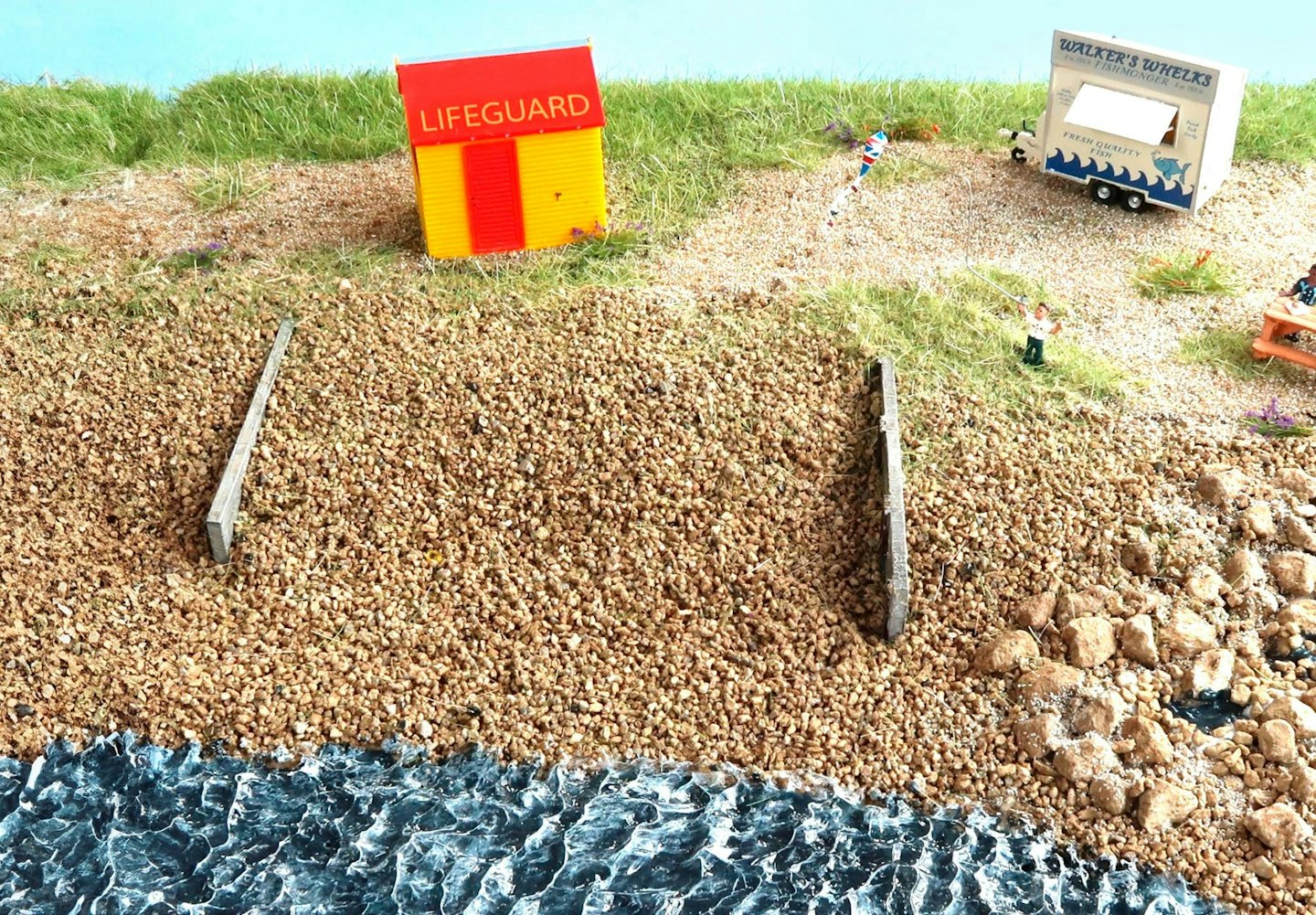

Think ‘beach’ and you immediately picture smooth, sun-kissed sand. Perfect for building sandcastles (or digging holes if you prefer!), playing football or cricket or simply relaxing on a towel. Yet there are dozens of beautiful beaches around the UK where you can’t dig, play or relax because they comprise more shingle than sand.
From Scotland to the South Coast, East Anglia to North Devon, there are shingle beaches galore. Some are mixed with sand whereas others are nothing more than acres of smooth stones that make that distinctive clonking sound when you walk on them.
A sandy beach is quite easy to recreate in model form, but a shingle beach presents some challenges. Woodland Scenics offers the solution in the form of its bags of Talus– essentially small stones – which come in three grades: coarse, medium and fine.
Another good find from the Bachmann/ Woodland Scenics range was re-purposing the Scenecraft Sleeper Retaining Walls as groynes, the distinctive feature that you find on a beach that acts as a barrier to long-shore drift.
In fact, you can get pretty much everything you need for a pebbly, shingle beach from Bachmann/Woodland Scenics. That made modelling this small scene a very quick affair. Within a few hours, I had a scene where, with a bit of imagination, I could hear the waves washing over the stones, smell the salt of the sea and feel the breeze blowing my hair.
All I needed was the taste of fish and chips!
WHAT YOU WILL NEED
SHOPPING LIST
◆ Woodland Scenics • WC1274 Fine Brown Talus • WC1275 Medium Brown Talus • WC1276 Coarse Brown Talus (£6.50 each) • WA1937 ‘HO’ Windy Day Play (£13.25) • WA1939 ‘HO’ Outdoor Dining (£13.50)
◆ Bachmann Scenecraft • 44-0153 Lifeguard hut (£15.95) • Wood Sleeper Retaining Walls (£13.95)
◆ Availability: Bachmann stockists
◆Web: www.bachmann.co.uk
TOOLS
◆ Woodland Scenics Scenic Glue
◆ Craft knife with sharp blade r Bowls r Paint brushes r Plastic pipette
STEP BY STEP
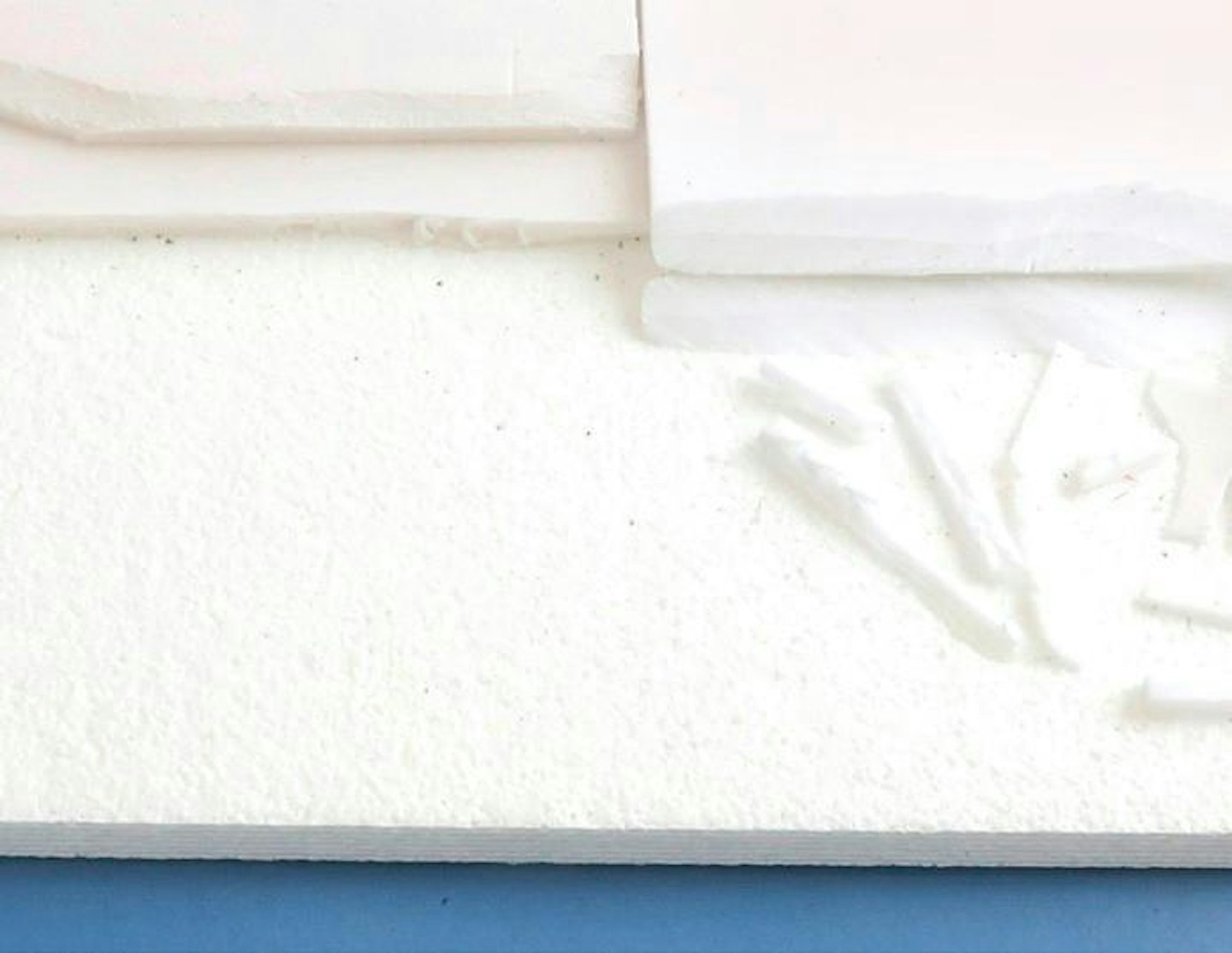
1 I used a piece of white foam to provide a lightweight base and then used plaster cloth to make the profile of a beach. Cut out small pieces of the base foam to make rock pools.

2 The surface was covered with a thin layer of plaster, coloured with a little brown paint. Set the Scenecraft retaining walls into the plaster. A little Scenic Glue helps to fix them into place. Leave to dry.
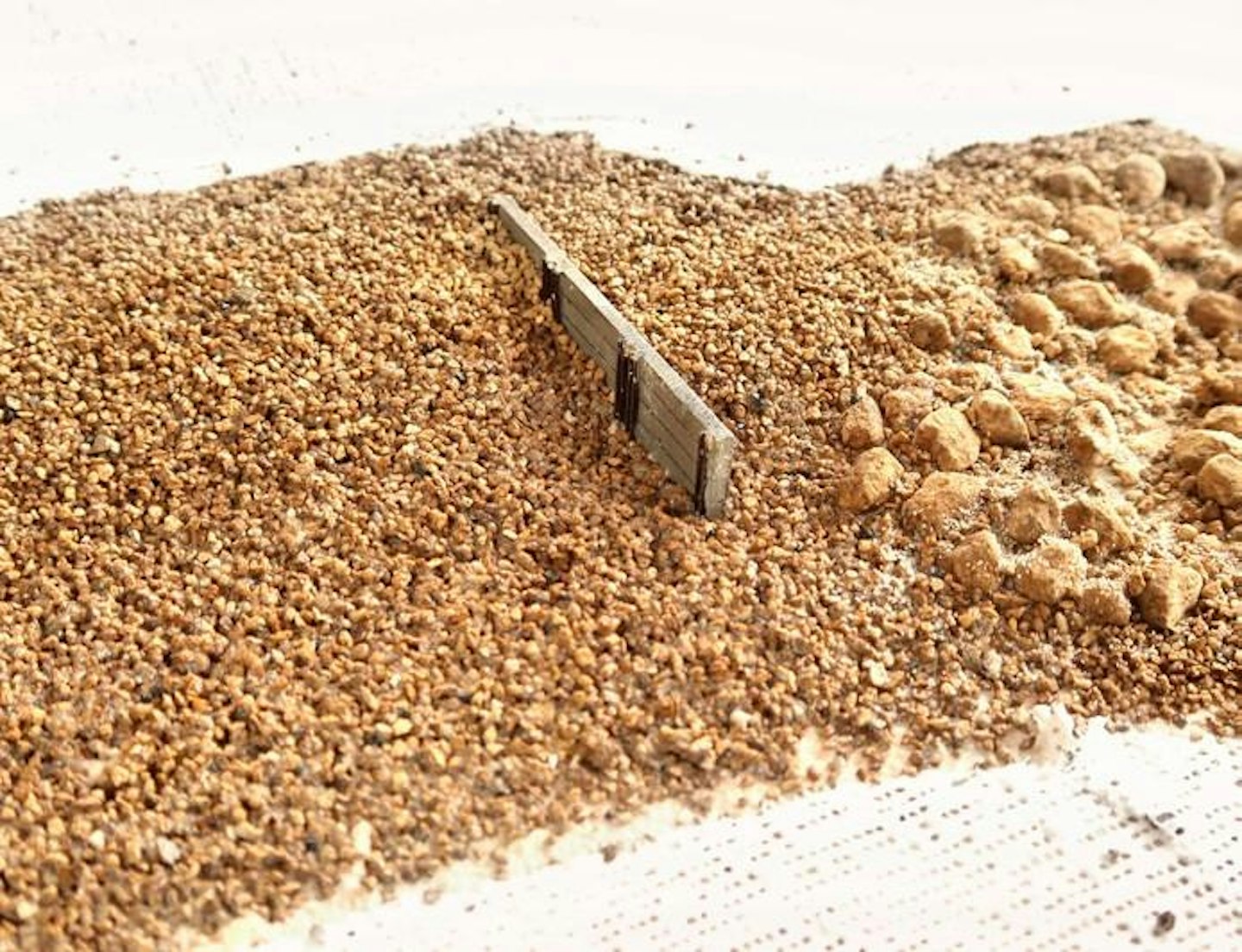
3 It’s worth studying pictures of real beaches to get a feel for where to place the different grades of Talus. I used all three sizes – fine, coarse and medium. Be careful to maintain depressions within your rock pools.
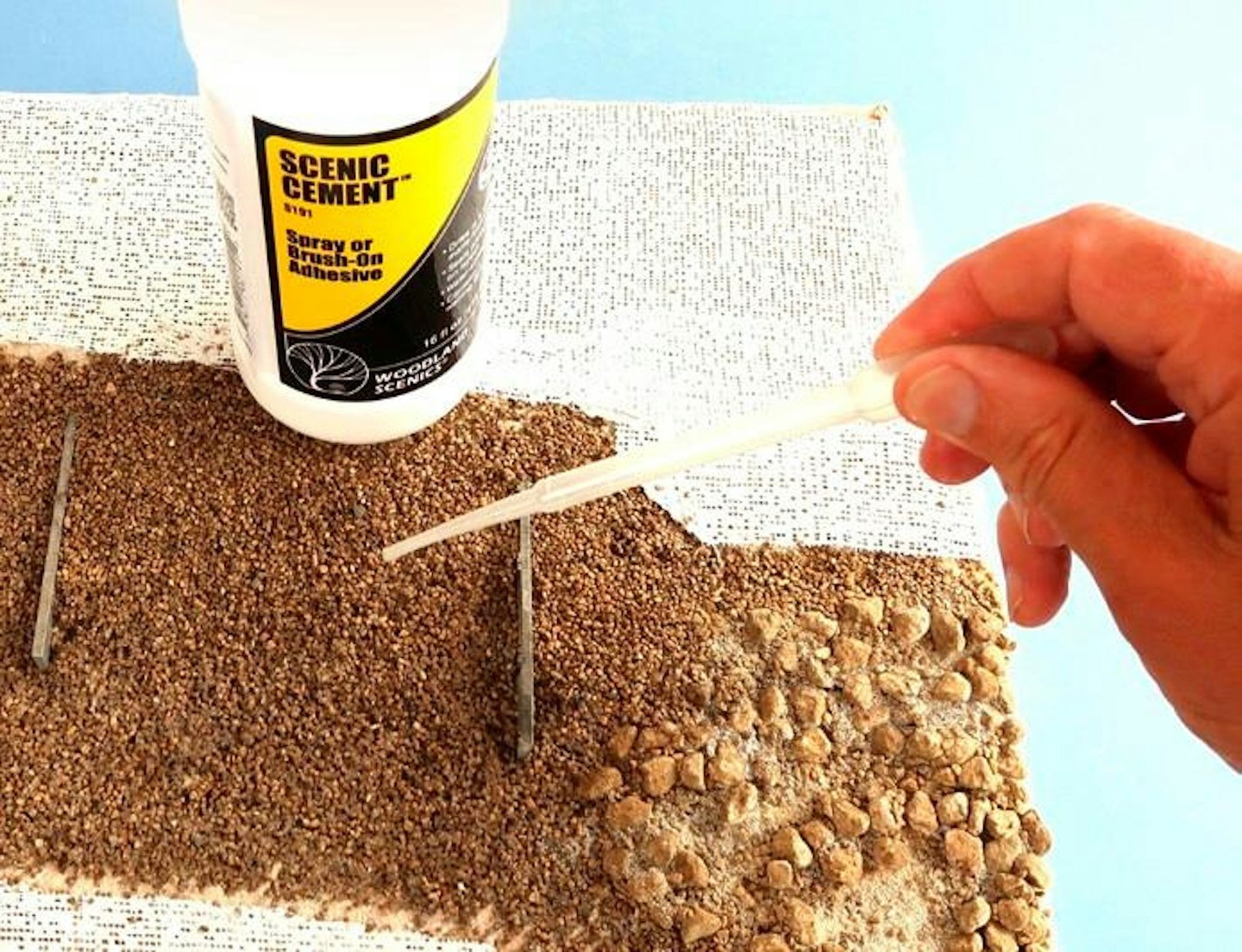
4 Use a plastic pipette to spread Scenic Cement over the loose Talus. Once the first coat has dried, cover the whole area again to ensure a permanent bond. This has worked well and the beach has remained stable.
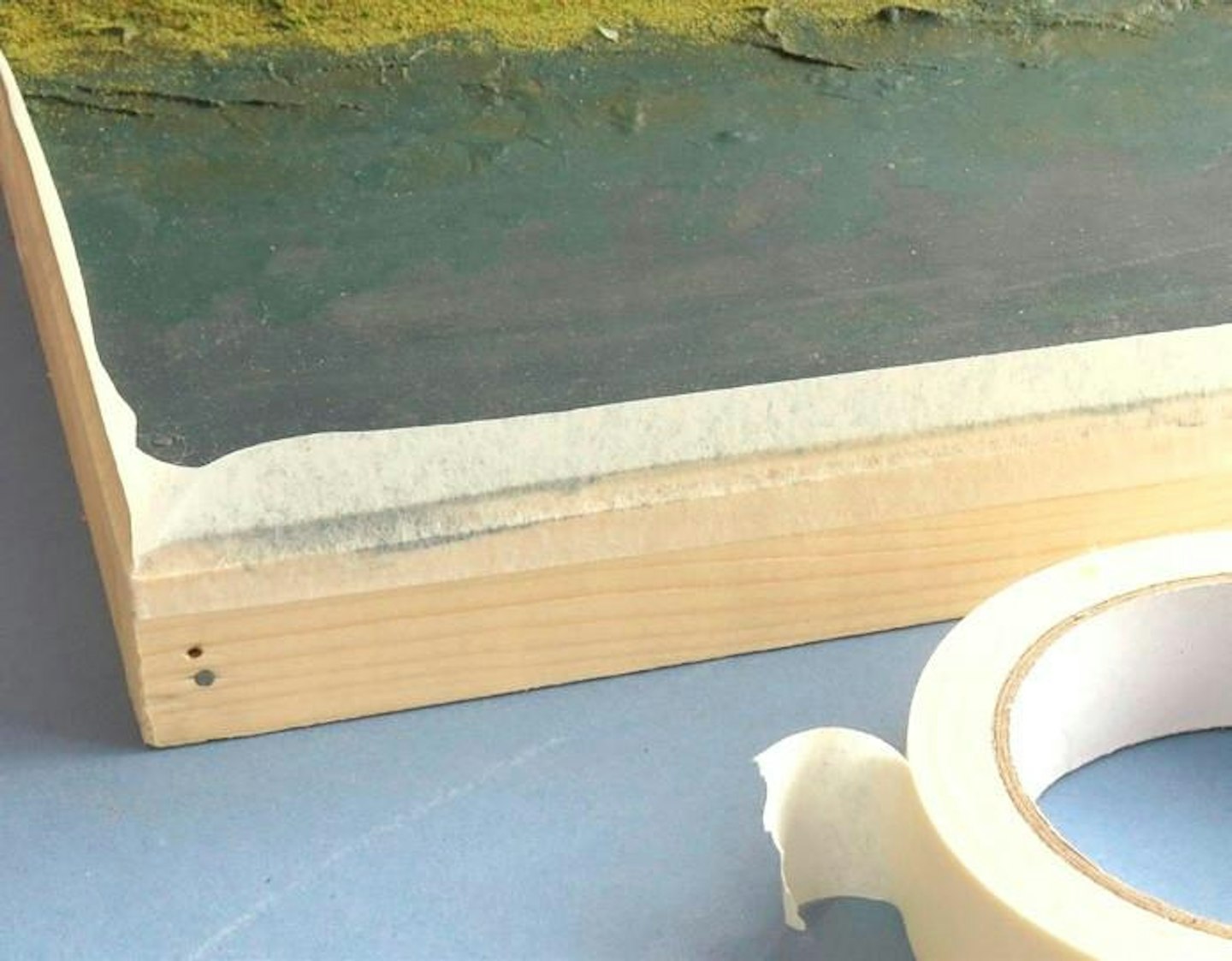
5 Line the edge of the baseboard with masking tape to prevent the water solution from leaking all over the place. I used Woodland Scenics’ Realistic Water for the first layer. Apply using the supplied instructions.
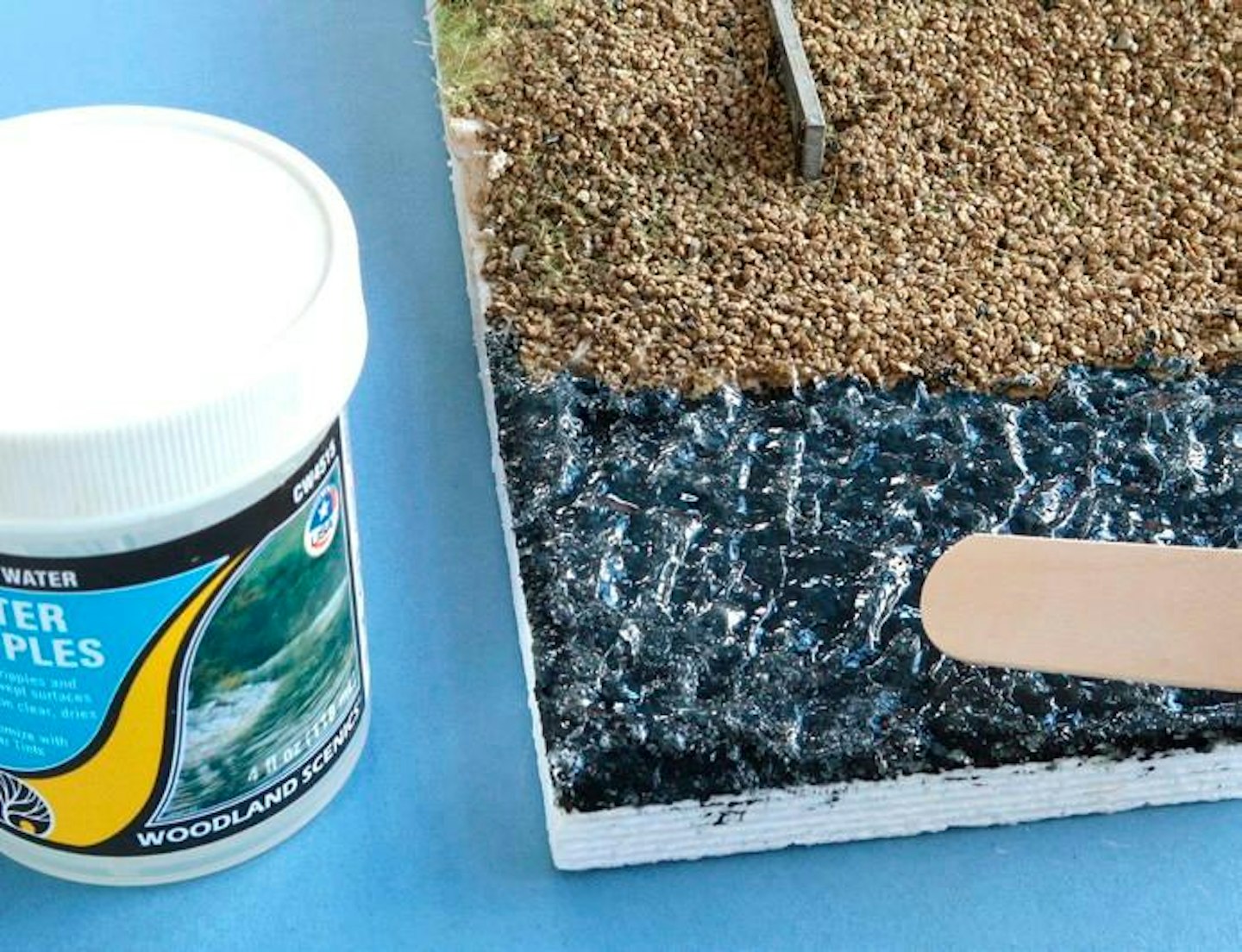
6 A layer or two of Realistic Water will leave a nice, flat, glossy water surface. In order to create waves, I used Woodland Scenics’ Water Ripples. You can use the supplied ‘lolly stick’ to whip the fluid into waves.
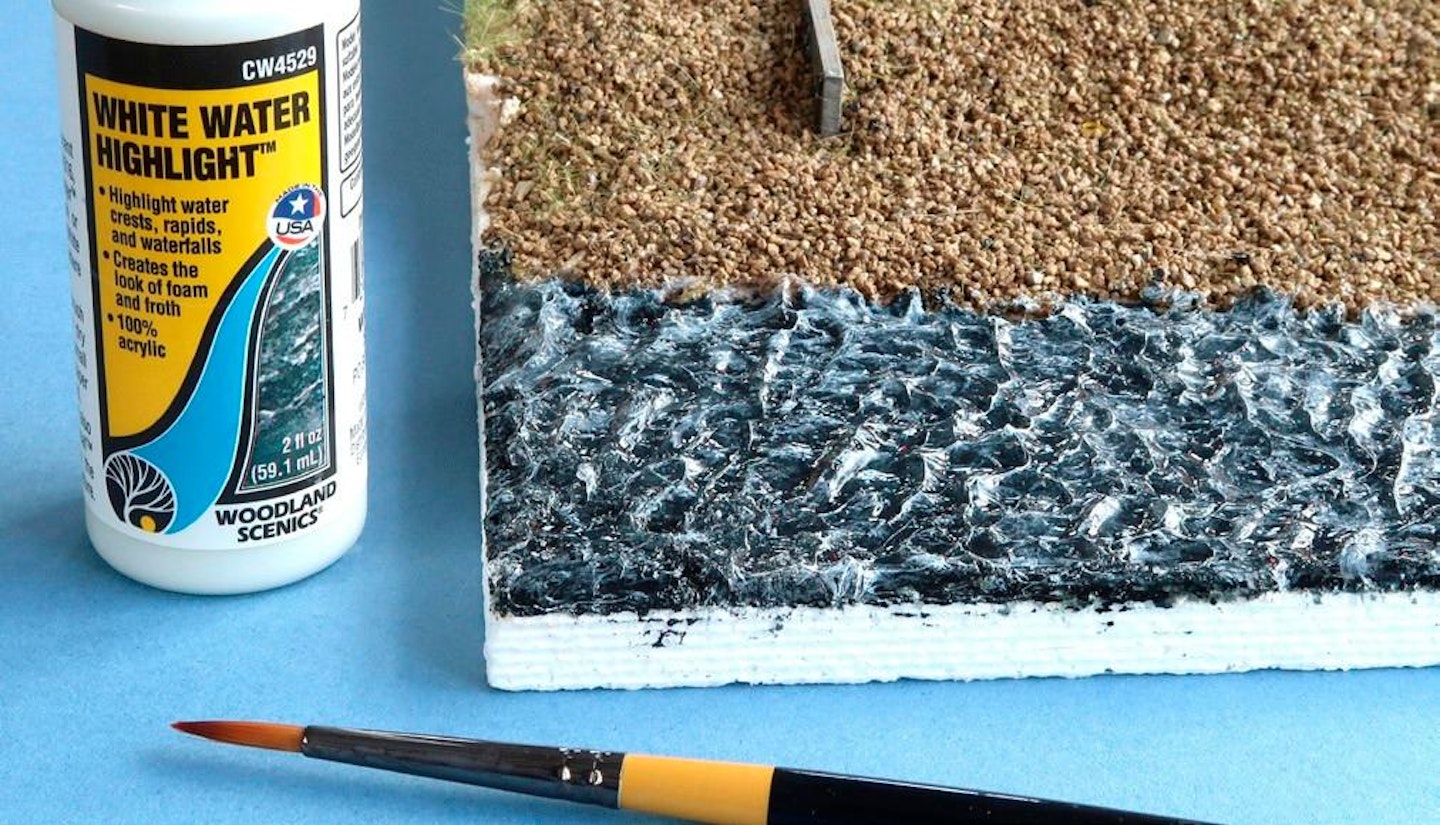
7 Woodland Scenics’ range of surface water products includes this white paint, which has been formulated to create ‘white horses’ on its Waves and Ripple products. Dab on to the dried waves.
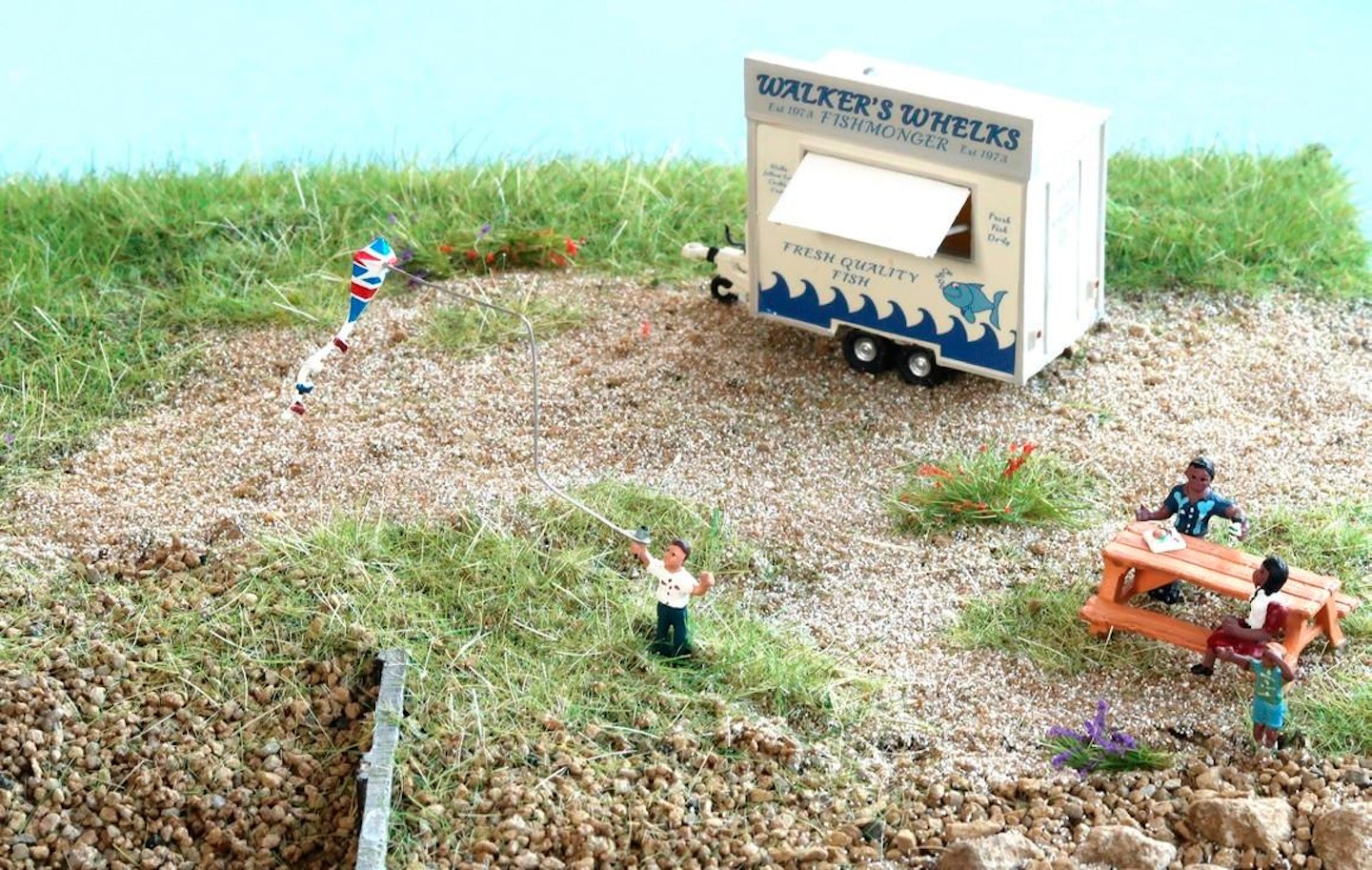
9 I used 7mm static grass towards the rear of the diorama to represent marram grass, fixing it into Woodland Scenics’ Static-Tac adhesive. Some Woodland Scenics Peel ‘N’ Plant tufts bring a little variety.
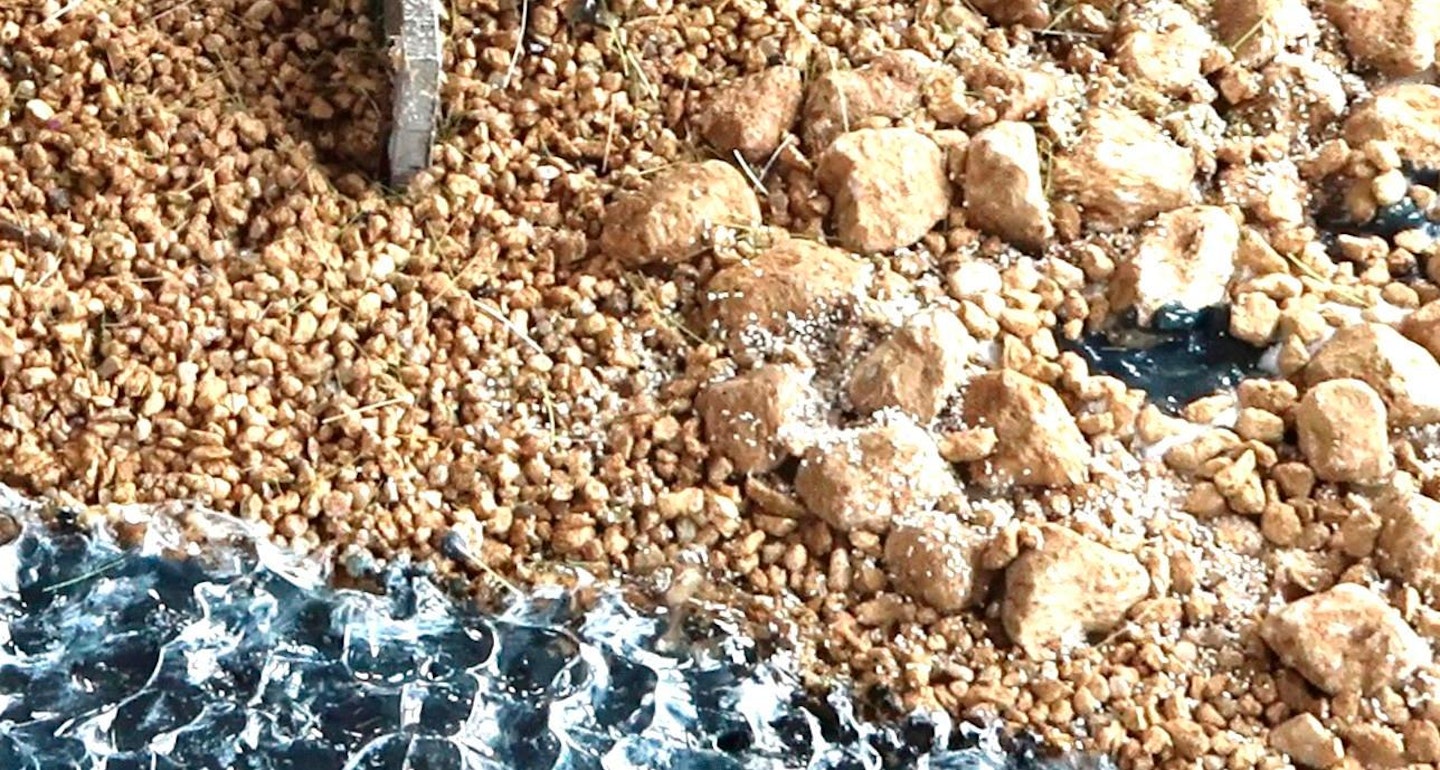
8 Don’t forget the rock pools. Use poster paints to colour the bottom of the pool – study the real thing first. Then fill with a little Realistic Water. Allow each layer to dry before adding another.
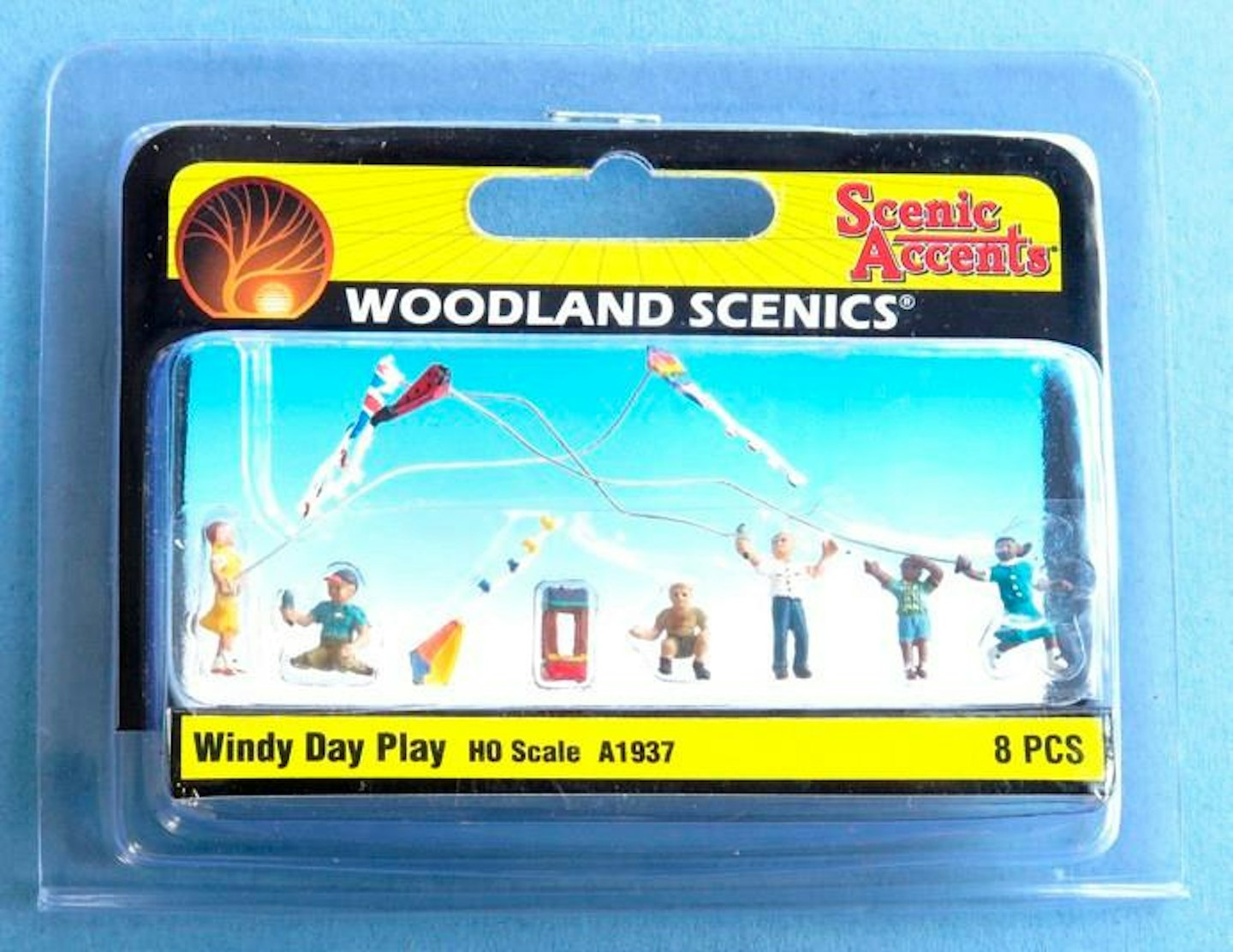
10 Woodland Scenics offers some useful packs for a beach scene, albeit in ‘HO’ scale. Fix with Scenic Glue. I felt the scene needed a fish retailer – but that particular Scenecraft model is no longer available new.
Each issue of Model Rail covers every stage of modelling, from buying your first model train set right through to museum standard fine-scale modelling. Find inspiration for your next project with our helpful tips, advice and in-depth detail on model trains and layouts.
Choose the right subscription for you and get instant digital access to the latest issue.

